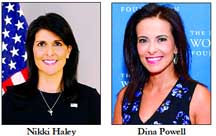
Sophie Edwards :
The hunt for the next president of the World Bank will kick off next month and will be “open, merit-based and transparent,” according to the institution’s board of executive directors.
Nominations for the bank’s next leader will officially open on Feb. 7 and close on March 14, according to a statement published Thursday. The plan is to have a new president in time for the World Bank spring meetings in Washington, D.C., in April.
The news comes after President Jim Kim’s surprise resignation on Monday to join a private investment firm, Global Infrastructure Partners, where he will focus on infrastructure investments in developing countries. The bank’s CEO Kristalina Georgieva will be the interim president after Kim steps down on Feb. 1.
Kim’s resignation has raised concerns among the international development community that the United States – which traditionally dictates who runs the organization – will seek to replace Kim with someone less supportive of financing climate change projects. A bank leader chosen by the Trump administration could also exacerbate tensions with China, which is mired in a trade war with the U.S., by reducing the bank’s lending to Beijing.
A primer on the World Bank president selection process Here’s what you need to know about how Jim Kim’s successor will be chosen.
As news of Kim’s resignation spread, advocacy groups were swift to demand the selection process to be more “open, transparent, and merit-based” than in previous years and called for the bank’s board to shake off the historic U.S. stronghold over the appointment process.
However, Scott Morris, a senior fellow and director of the U.S. Development Policy Initiative at the Center for Global Development, said the quick progress in setting out a timeline for Kim’s replacement indicates that the White House intends to keep control of the nomination.
“I think it means that the U.S. is serious about putting forward a candidate, with an expectation that they will prevail. They would not have allowed the clock to start otherwise,” Morris said.
But the move does not necessarily mean they have a specific candidate in mind, he added. Speculation over Kim’s possible replacements is rife and suggestions include former U.N. Ambassador Nikki Haley and Dina Powell, former counselor to President Donald Trump.
In the bank statement, the board affirmed its commitment to an open, merit-based, and transparent appointment system in line with the new process agreed in 2011, under which executive directors can nominate candidates – who must be citizens of one of the bank’s member countries and cannot be a bank governor, executive director, or alternate. Shortlisted candidates are then interviewed by the board, which has the final say on who is selected.
Frank Heemskerk, former executive director for the Netherlands constituency, who stepped down last year, emphasized that it is the board that elects the World Bank president and warned the U.S. would be unwise to put up an unpopular candidate.
“It’s a big risk for the Americans if they [were to] nominate somebody who did not have the majority of the executive directors behind him or her, because they are an outlier on climate or don’t understand the value of the cooperative,” Heemskerk told Devex, adding that “China is an important member of the World Bank” and the U.S. “should work with China.”
“It is the board that elects the president,” he added.
As well as meeting specific criteria outlined in the selection policy, executive directors also said candidates “should be committed to the implementation” of the bank’s vision agreed in 2016, known as the Forward Look, and also the conditions outlined as part of the $13 billion capital increase package secured by Kim in April 2018, according to the statement.
(Sophie Edwards is a reporter for Devex based in London covering global development news including global education, water and sanitation, innovative financing, the environment along with other topics).

